It’s one of the most popular and creative toys around, but playing with plastic building bricks could create something much less desirable in households and childcare settings: large amounts of micro- and nanoplastic particles. While it remains unknown whether such plastic particles pose any risk to health, the findings add yet another source of emerging indoor pollutants and the researchers recommend caution to avoid inhaling or swallowing them.

It’s widely known that micro- and nanoplastics are ubiquitous in the environment, originating from all sorts of plastic materials we touch and use every day from food packaging and plastic cookware, to carpets, clothes and children’s toys. However, there are still big gaps in our understanding of the origins and fate of these tiny particles and, until now, nobody had explored toy building bricks as a potential source of them.
‘My research interest is in environmental pollutants and remediation and my daughter likes toy building bricks very much,’ says Cheng Fang who led the work at the University of Newcastle in Australia. ‘I play with her and so I wondered if there might be some concerns from an emerging contamination point of view.’
To find out, Cheng’s team opened fresh packets of plastic bricks, selected 50 different kinds and assembled and disassembled each of them 10 times. Before and after images were taken with a scanning electron microscope (SEM), which revealed that a small number of particles were initially present due to the manufacturing process but their abundance was far greater following simulated play.

The images suggest that friction from repeatedly connecting and disconnecting bricks generated scratches and scuffs where micro- and nano-sized particles formed, predominantly at the tip of the interlocking studs, as well as along their length and inside the stud receptacles. Combining the SEM images with statistical analysis, the team estimated the number of particles generated, finding that every square millimetre of the blocks under clicking and unclicking stress were producing thousands of microparticles and hundreds of thousands of nanoparticles (smaller than 20μm).
Raman spectroscopy, coupled with an algorithm, helped to identify which polymers the particles were made from based on their molecular spectral signatures. The algorithm enhanced the signal-to-noise ratio in the Raman spectra by making the peaks stand out from background noise, which was crucial in order to get meaningful readings of the nano-sized particles.
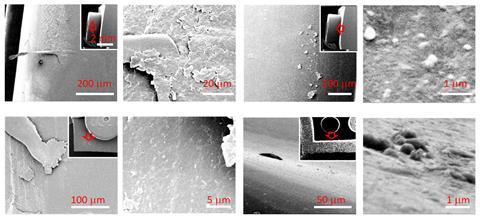
Results showed that the particles were either ABS (acrylonitrile butadiene styrene) or polycarbonate, both used to make toy building bricks, including Lego. While these are deemed to be safe and non-toxic plastics, some studies have found that fumes and fine particles of ABS produced by 3D printing could be toxic. However, whether micro- and nano-sized particles from toys such as building blocks pose a health risk if inhaled or ingested remains an open question.
‘That we are generating microplastics from plastic play blocks is not unexpected,’ says pollution expert Fay Couceiro, who leads the University of Portsmouth’s microplastic research group in the UK. ‘What is interesting in this work are the methods for nanoplastic estimation.’ She explains that nanoparticles are usually too small for traditional spectroscopy methods to detect. ‘While there is still further work to do validating the method, such as ensuring there is no background interference, it is a promising line of investigation for future nanoplastic work.’
Cheng agrees that finding so many particles wasn’t surprising. He highlights that the toxicity of microplastics and nanoplastics in our daily lives is still unknown and needs to be investigated. In the meantime, he recommends that when children play with plastic bricks they are always supervised by an adult to minimise the exposure risk. ‘During play, do not eat, suck fingers or drink,’ he explains. ‘After play, I recommend hand washing.’
‘Unfortunately, plastic surrounds us and our children,’ says Couceiro. She suggests that putting these results in a wider context is important. ‘How do the numbers of micro- and nanoplastics released from building blocks compare to other sources and what is their risk to human health? To understand where best to enact legislation, we need a full understanding of all the sources of microplastics and nanoplastics, and to understand their fate.’
References
Y Luo et al, J. Hazard, Mater., 2024, DOI: 10.1016/j.jhazmat.2024.134424
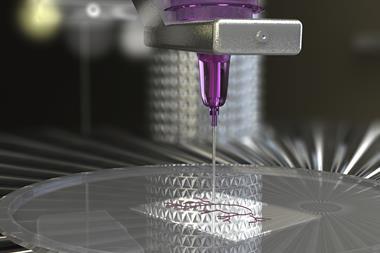
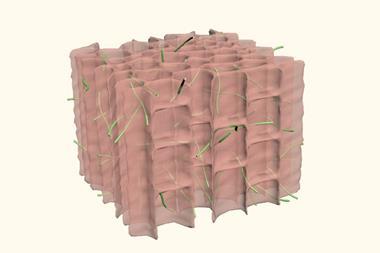
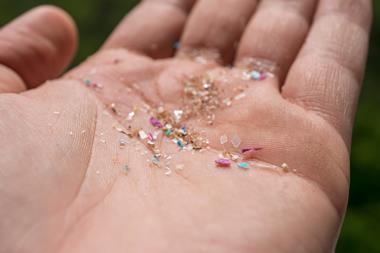
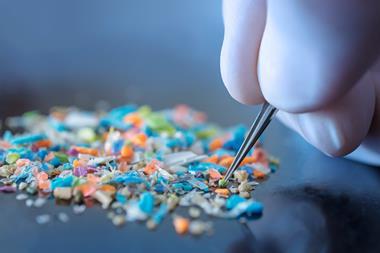

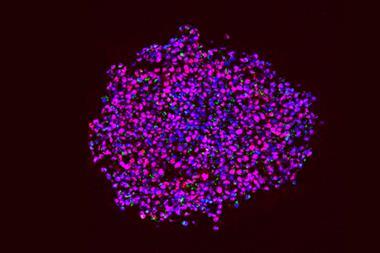






1 Reader's comment